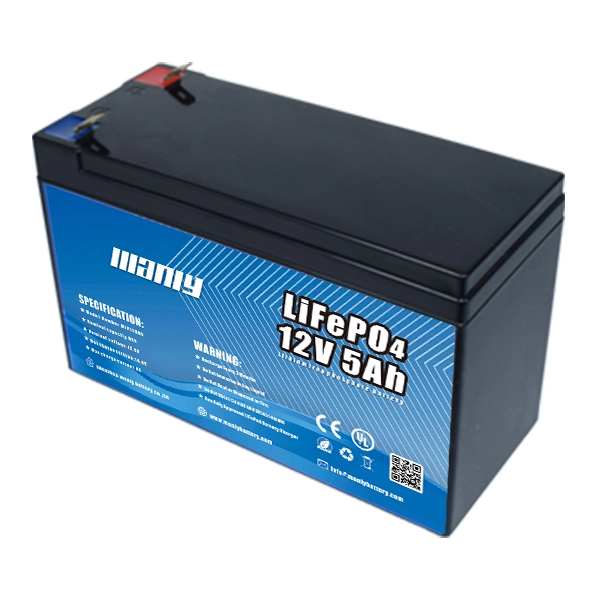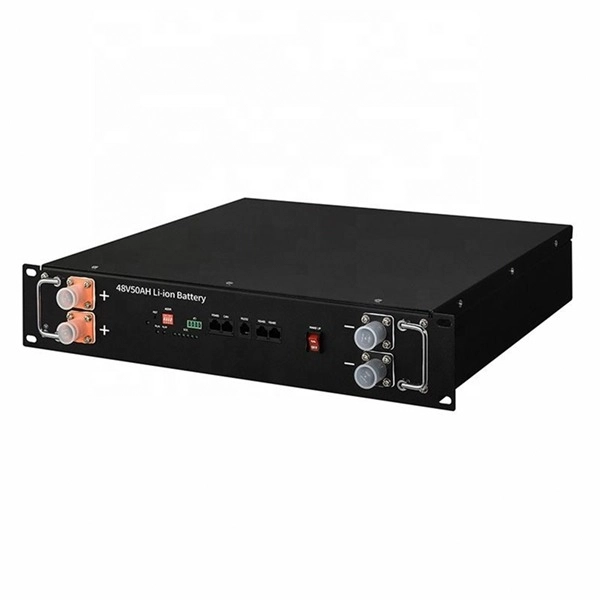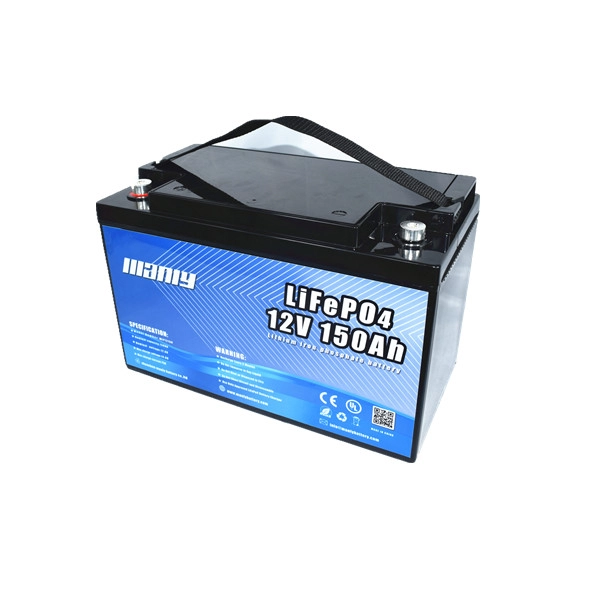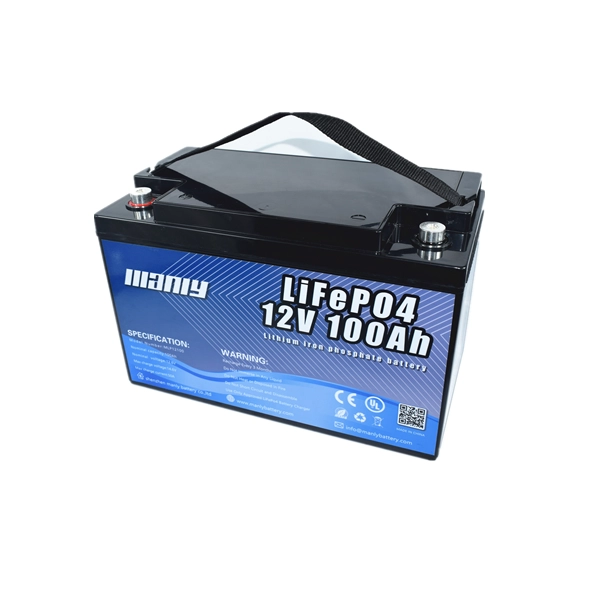Battery CCA to Ah / Ah to CCA Calculator & Guide
Battery CCA to Ah / Ah to CCA Calculator
How to Convert Cold Cranking Amps (CCA) to Amp Hours (Ah)
Converting Cold Cranking Amps (CCA) to Amp Hours (Ah) is not a straightforward process because CCA and Ah describe different aspects of a battery’s performance. Cold Cranking Amps (CCA) measures the battery’s ability to deliver high current to start an internal combustion engine, typically for a duration of 30 seconds, whereas Amp Hours (Ah) measures the battery’s capacity to provide a consistent current over an extended period, usually 20 hours. Despite both terms describing a battery’s ability to provide power, they represent two extremes of battery usage.
Understanding CCA and Ah
Cold Cranking Amps (CCA) is the measure of the maximum current (in amps) that a fully charged 12V battery can deliver for 30 seconds at 0°F (-18°C), while maintaining a voltage above 7.2V. This metric is crucial for starting internal combustion engines, especially in cold conditions when higher currents are needed due to increased resistance.
Amp Hours (Ah) represents the battery’s capacity. It is a measure of how much current a battery can supply over a specified time, typically calculated as the constant current a fully charged 12V lead-acid battery can supply over 20 hours at 80°F (27°C) without dropping below 10.5V. For example, a 100 Ah lead-acid battery can provide 5 amps of current for 20 hours.
For lithium batteries and other similar types, Ah is usually calculated as the constant current that the battery can provide for 20 hours without the voltage falling below a specified cutoff. It is important to verify the actual values provided by the manufacturer, as they may specify capacity over different timeframes, such as 1 hour, 5 hours, or 10 hours.
How to Convert CCA to Ah
The CCA to Ah conversion is not standardized because it depends on several factors, including the battery type, chemistry, and intended usage. The conversion may differ between starting batteries, dual-purpose batteries, and deep cycle batteries, as each type is designed differently to optimize for specific functions.
To estimate the conversion between CCA and Ah, a commonly used formula is:
Ah = CCA / Conversion Factor
Where the conversion factor typically ranges from 7 to 10, depending on the battery type and design. For example, if you have a lead-acid battery with a CCA rating of 720 and use a conversion factor of 7.5, the estimated Ah would be:
Ah = 720 / 7.5 ≈ 96 Ah
This calculation provides an approximate Ah value, which can help determine the battery’s suitability for long-term power needs, such as powering electronic devices or providing backup energy.
How to Convert Ah to CCA
Similarly, to perform an Ah to CCA conversion, the formula is:
CCA = Ah * Conversion Factor
For example, if you have a battery with a capacity of 100 Ah and use a conversion factor of 7.5, the estimated CCA would be:
CCA = 100 * 7.5 = 750 CCA
Practical Use Cases for CCA and Ah
Different battery applications require different characteristics, making it essential to understand when to prioritize CCA or Ah:
- Starting Applications (Automotive Batteries): For starting engines, a higher CCA is crucial because it indicates the battery’s ability to provide a burst of energy needed for ignition, particularly in cold conditions. Starting batteries are optimized for this purpose with high CCA ratings but are not suited for deep discharge cycles.
- Dual-Purpose Batteries: These batteries offer a balance between starting power and deep cycle capabilities. They can be used both to start engines and power other onboard electronics when the engine is off. Dual-purpose batteries have moderate CCA and Ah ratings, making them versatile for boats and RVs where both functionalities are needed.
- Deep Cycle Batteries: In applications like solar energy storage, trolling motors, or backup power, deep cycle batteries are preferred because they provide steady power over long periods. Ah is the key metric here, indicating how long the battery can supply a certain amount of current before needing to be recharged. These batteries are not designed for high CCA because they are optimized for endurance rather than short bursts of power.
Cross Reference Chart for CCA to Ah and Ah to CCA
Converting between Cold Cranking Amps (CCA) and Amp Hours (Ah) can be extremely helpful for selecting the right battery for a specific application. Both CCA and Ah are critical metrics in understanding a battery’s capability, but they serve different purposes. CCA is crucial for starting applications where a burst of energy is required to start an engine, whereas Ah measures the battery’s capacity to provide consistent energy over time.
Providing a Common Reference Chart for CCA to Ah
To assist users in converting CCA to Ah and Ah to CCA, a cold cranking amps chart is an essential tool. This chart provides average values for different types of batteries, such as starting, dual-purpose, and deep cycle batteries. It lists commonly used BCI battery groups along with their corresponding CCA and Ah values. With this reference, users can easily cross-check values and choose the correct battery based on their power and performance needs.
| BCI Battery Group | Starting / Cranking | Dual Purpose | Deep Cycle |
| Group 8D | – | 220 Ah, 1450 CCA | 250 Ah, – |
| Group 22NF | 55Ah, 500 CCA | 60Ah, 745 MCA | 55 Ah, – |
| Group 24 | – | 76 Ah, 840 CCA | 85 Ah, – |
| Group 26 | 50Ah, 550 CCA | – | – |
| Group 27 | – | 90 Ah, 900Ah | 100Ah, – |
| Group 31 | – | 100 Ah, 1000 CCA | 120 Ah, – |
| Group 34 | 55 Ah, 800 CCA | 60 Ah, 750 CCA | – |
| Group 34/78 | 50 Ah, 800 CCA | 65 Ah, 850 CCA | – |
| Group 35 | 44 Ah, 720 CCA | 60 Ah, 740 CCA | – |
| Group 41 (T65, 54LB) | 50 Ah, 650 CCA | – | – |
| Group 47 (H5, L2, 55L2) | 60 Ah, 600 CCA | 50 Ah, – | – |
| Group 48 (H6, L3, 66L3) | 70 Ah, 760 CCA | 70 Ah, 750 CCA | – |
| Group 49 (H8, L5, 88L5) | 92 Ah, 850 CCA | 90 Ah, 850 CCA | – |
| Group 51 (51R) | – | 60 Ah, 700 CCA | 60 Ah, – |
| Group 58 (58R) | 50Ah, 550 CCA | – | – |
| Group 65 | – | 75 Ah, 850 CCA | – |
| Group 75 | 55 Ah, 760 CCA | 55 Ah, 750 CCA | – |
| Group 78 | 55 Ah, 760 CCA | 65 Ah, 800 CCA | – |
| Group 85/86 | – , 625 CCA | 55 Ah, 730 CCA | – |
| Group 94R | – | 80 Ah, 800 CCA | – |
| Group 95R (H9, L6) | 105 Ah, 925 CCA | 105 Ah, 950 CCA | – |
| Group 96R | – , 600 CCA | 50 Ah, 600 CCA | – |
| Group GC2/GC2H (6V) | – | – | 215 Ah, – |
| Group GC8/GC8H (8V) | – | – | 180 Ah, – |
| Group GC12 (12V) | – | – | 150 Ah, – |
| Group U1/U1R | 35 Ah, 400 CCA | – | 35 Ah, 300 CCA |
Example of Using the Chart for Quick Conversion
Let’s say you have a starting battery with a CCA rating of 750 and want to know the equivalent Ah rating. Using the cold cranking amps chart, you can determine that a 750 CCA battery roughly corresponds to a certain Ah value, depending on the battery type. For instance, a dual-purpose battery might provide 100 Ah for a 750 CCA rating. This information is essential when you are determining whether the battery will not only start your vehicle but also provide enough energy for other electronic needs.
For deep cycle applications, the Ah value is more critical, and using the chart can help determine if the available CCA aligns with your equipment’s starting needs. This makes the cold cranking amps chart particularly valuable in scenarios like marine, RV, and solar battery selection, where both starting power and sustained energy are required.
By using a cross reference chart, users can make informed decisions on which battery best fits their application. Whether it’s for automotive use, golf carts, or solar storage, having a quick reference for CCA to Ah conversion can simplify the selection process and ensure the battery performs as expected.
CCA to Ah Conversion for Lithium Batteries
Lithium Batteries: Special Considerations for CCA to Ah Conversion
When converting CCA to Ah for lithium batteries, there are some key differences compared to traditional battery chemistries like lead-acid or AGM. Lithium batteries, such as Lithium Iron Phosphate (LiFePO4), have different discharge characteristics that impact how they are rated for CCA and Ah.
Unlike lead-acid batteries, lithium batteries are designed to deliver a more consistent voltage output across their discharge cycle. This means that lithium batteries can sustain a higher level of power delivery even as their capacity depletes, which makes them particularly advantageous in applications where both starting power and consistent energy supply are needed.
Differences Between Lithium, Lead-Acid, and AGM Batteries
- Cold Cranking Amps (CCA) Rating
- Lead-Acid Batteries: Lead-acid batteries, especially starting batteries, are designed to deliver high CCA ratings, which are necessary for engine starting applications. These batteries are capable of delivering large bursts of current for a short period, but they cannot sustain deep discharges without damage.
- AGM Batteries: Absorbent Glass Mat (AGM) batteries are an improvement over traditional lead-acid batteries. They can provide high CCA values and are less prone to damage from deep discharge, making them suitable for dual-purpose applications where both starting power and moderate cycling are needed.
- Lithium Batteries: Lithium Iron Phosphate (LiFePO4) batteries have lower CCA values compared to lead-acid or AGM batteries of the same capacity. However, they compensate for this with their ability to deliver consistent power throughout the discharge cycle, making them ideal for applications where both starting power and sustained use are important.
- Amp Hours (Ah) Capacity
- Lead-Acid and AGM Batteries: The Ah rating for lead-acid and AGM batteries is typically calculated over a 20-hour discharge period. These batteries lose voltage steadily as they discharge, which means their performance diminishes over time.
- Lithium Batteries: The Ah rating for lithium batteries is also calculated over a 20-hour period, but the discharge profile is different. Lithium batteries maintain a more stable voltage throughout their discharge, providing more usable energy compared to lead-acid or AGM batteries of the same Ah rating. This means that even if a lithium battery has a lower CCA rating, it may still be better suited for applications requiring both starting power and continuous energy.
Practical Applications for Lithium Batteries
Lithium batteries are ideal for applications like marine, RV, and solar energy storage where both starting capability and deep cycling are needed. For example, in a marine environment, a lithium battery can provide the burst of power needed to start an engine while also offering reliable, long-term energy for onboard electronics. In RVs and solar storage, the consistent output of a lithium battery ensures that appliances can be powered without the significant voltage drops that occur in lead-acid batteries.
Lithium batteries also have faster recharge times, higher efficiency, and longer lifespans compared to lead-acid and AGM batteries. These advantages make them an increasingly popular choice for both recreational and industrial applications where reliability and performance are critical.
By understanding the differences in CCA to Ah conversion between lithium and other battery types, users can make informed decisions about the best battery for their specific needs. Whether choosing a battery for starting an engine or for providing sustained power over time, lithium batteries offer distinct advantages that make them a superior choice in many scenarios.
Different Applications and Battery Types: CCA to Ah and Ah to CCA Conversion
Golf Cart Batteries: Conversion Across Different Battery Types
Golf cart batteries can vary significantly in terms of their CCA and Ah requirements based on the type of battery used—whether it’s a lead-acid, AGM, or lithium battery. Golf carts typically rely more on Ah capacity than on CCA, as they are used to power the vehicle consistently over time, rather than requiring a short burst of power to start an engine.
- Lead-Acid Batteries: These are commonly used in golf carts due to their cost-effectiveness. However, their Ah rating tends to be lower when compared to newer battery technologies. Lead-acid golf cart batteries provide adequate power for moderate use, but they need more frequent charging.
- AGM Batteries: AGM batteries are an improvement over traditional lead-acid batteries and offer higher Ah ratings with less maintenance. They are also capable of handling more discharge cycles, making them more reliable for longer-term golf cart use.
- Lithium Batteries: Lithium Iron Phosphate (LiFePO4) batteries have become a popular choice for golf carts due to their long lifespan, higher Ah rating, and lighter weight. Lithium batteries provide more consistent voltage and require less maintenance compared to lead-acid or AGM options, making them ideal for users looking for enhanced performance and reliability.
Marine Batteries: Conversion Requirements and Application Scenarios
Marine batteries require a balance of CCA for engine starting and Ah for powering onboard electronics such as navigation systems, lights, and entertainment devices. Depending on the use case, different battery types are preferred:
- Starting Batteries: Marine starting batteries are designed to deliver high CCA to ensure the engine can be started reliably, even in colder conditions. These batteries are not meant for deep cycling.
- Deep Cycle Marine Batteries: For powering onboard electronics, deep cycle batteries are preferred as they provide a higher Ah rating, allowing for sustained power over long periods. Lead-acid deep cycle batteries are often used in marine applications, but lithium batteries are becoming increasingly popular.
- Lithium Marine Batteries: Lithium marine batteries provide both starting power and deep cycle capacity. They have lower CCA compared to lead-acid batteries but provide more reliable power over time, making them ideal for both starting engines and powering onboard systems for extended periods.
Forklift and Solar Energy Batteries: Specific Conversion Formulas and Examples
Forklift batteries and solar energy storage batteries have unique power requirements that make Ah more critical than CCA:
- Forklift Batteries: Forklifts require batteries with high Ah ratings to sustain continuous operation over long shifts. Lead-acid batteries have traditionally been used in forklifts, but they need frequent maintenance. Lithium batteries provide higher efficiency, faster charging times, and require virtually no maintenance, making them a preferred choice for many industries.
- Solar Energy Storage: For solar applications, deep cycle batteries with high Ah ratings are essential to store energy generated during the day for use at night. Lithium batteries, specifically LiFePO4, are well-suited for solar storage due to their long cycle life, efficiency, and ability to handle partial charging without reducing performance.
General Conversion Formula for Different Application Scenarios
To convert CCA to Ah or Ah to CCA for different applications, a general formula can be used, but it’s important to remember that the conversion factor varies depending on the battery type and application. A common formula is:
Ah = CCA / Conversion Factor
- For lead-acid batteries, the conversion factor typically ranges between 7 to 10.
- For AGM batteries, it is slightly higher, ranging from 8 to 11.
- For lithium batteries, the conversion factor is usually between 10 to 12, reflecting their higher efficiency and stable discharge characteristics.
These formulas provide a rough estimate and are most effective when combined with application-specific considerations and tools like a cold cranking amps chart or our CCA to Ah calculator for precise conversions.
By understanding how to convert CCA to Ah and vice versa for different applications, users can choose the right battery that meets both their starting and long-term power needs, ensuring optimal performance and reliability across a wide range of scenarios.
Advantages of MANLY Battery in CCA to Ah Conversion
MANLY Battery: Leading the Industry in CCA to Ah Solutions
As one of China’s leading battery manufacturers, MANLY Battery has established itself as an industry leader through dedication to quality and innovative solutions. MANLY offers significant advantages when it comes to CCA to Ah conversion and overall battery performance.
Unmatched Production Capacity and Diverse Product Range
MANLY Battery’s production capacity is one of the largest in the industry, producing millions of battery cells every day. With a facility spanning 65,000 square meters across locations like Shenzhen, Dongguan, and Huizhou, MANLY Battery produces a vast assortment of LiFePO4/lithium-ion batteries that cater to a wide range of applications, including golf carts, forklifts, solar energy storage, and marine use.
- 6V to 72V Lithium Batteries: MANLY’s batteries cover a variety of voltage needs, making them versatile for different scenarios.
- Applications Covered: From solar energy storage to robots, forklift batteries, and UPS systems, MANLY offers a battery for every purpose.
Customized Solutions for CCA and Ah Conversion
One of MANLY Battery’s greatest strengths is its ability to provide customized battery solutions to meet the specific needs of its customers. When it comes to CCA to Ah conversion, MANLY’s engineers work closely with clients to ensure the batteries are optimized for their intended application—whether for high starting power or long-term energy storage.
- Tailored Voltage and Capacity: MANLY can customize voltage, capacity, and even the physical appearance of the batteries to meet unique requirements.
- Industry-Specific Needs: Whether for golf carts, marine applications, or solar installations, MANLY’s expertise ensures the ideal CCA to Ah ratio for your application.
Global Certifications and Safety Features
MANLY Battery products are backed by prestigious global certifications like UN38.3, IEC62133, UL, and CE, demonstrating their commitment to quality and safety. These certifications make MANLY’s batteries reliable for both domestic and international markets, ensuring they meet the highest safety standards.
- Advanced Safety Features: MANLY batteries come equipped with features like short circuit protection, overcharge safeguards, and overcurrent preventions. This ensures the battery performs safely under different conditions.
- 10-Year Warranty: MANLY Battery provides a 10-year warranty on its products, giving users confidence in the longevity and reliability of their batteries.
Superior Performance in Harsh Environments
MANLY’s LiFePO4 batteries are built to endure extreme temperatures, ranging from -20°C to 75°C (-4°F to 167°F). This resilience makes them suitable for use in harsh conditions, whether in cold climates or hot industrial environments.
- Reliable in Tough Conditions: The ability of MANLY batteries to maintain performance in such conditions makes them ideal for demanding applications, such as marine or solar energy storage, where environmental factors can be challenging.
High Efficiency and Enhanced User Experience
MANLY Battery sets efficiency benchmarks with a remarkable 95% energy efficiency rate, far outperforming traditional lead-acid batteries that typically achieve only 70%. This level of efficiency translates to faster charging times, lower energy consumption, and a longer service life.
- Innovative Features: MANLY batteries incorporate modern features such as Bluetooth connectivity for real-time monitoring and an intuitive battery level display that enhances user experience.
- Cost-Effective Performance: By choosing MANLY Battery, users benefit from longer-lasting batteries that offer superior performance, ultimately reducing the overall cost of ownership.
Conclusion
Understanding the relationship between Cold Cranking Amps (CCA) and Amp Hours (Ah) is vital for selecting the right battery for different applications, from starting an engine to powering electronics over extended periods. By using tools like the cold cranking amps chart and our CCA to Ah calculator, users can make informed choices to meet their specific requirements. MANLY Battery not only offers high-quality products but also provides customized solutions that cater to a variety of applications, ensuring performance, safety, and efficiency. Whether for golf carts, marine use, forklifts, or solar energy storage, MANLY Battery stands out as a trusted partner in energy solutions.
Contact Us
Contact MANLY Battery team at [email protected] or fill out the form below




